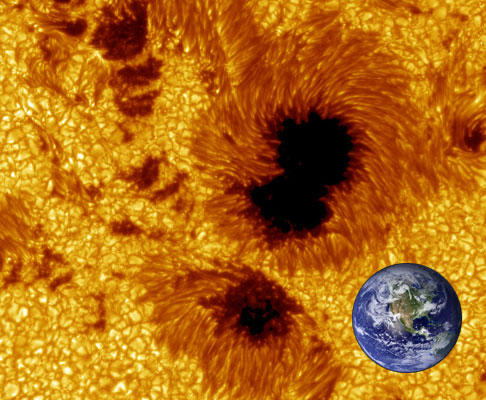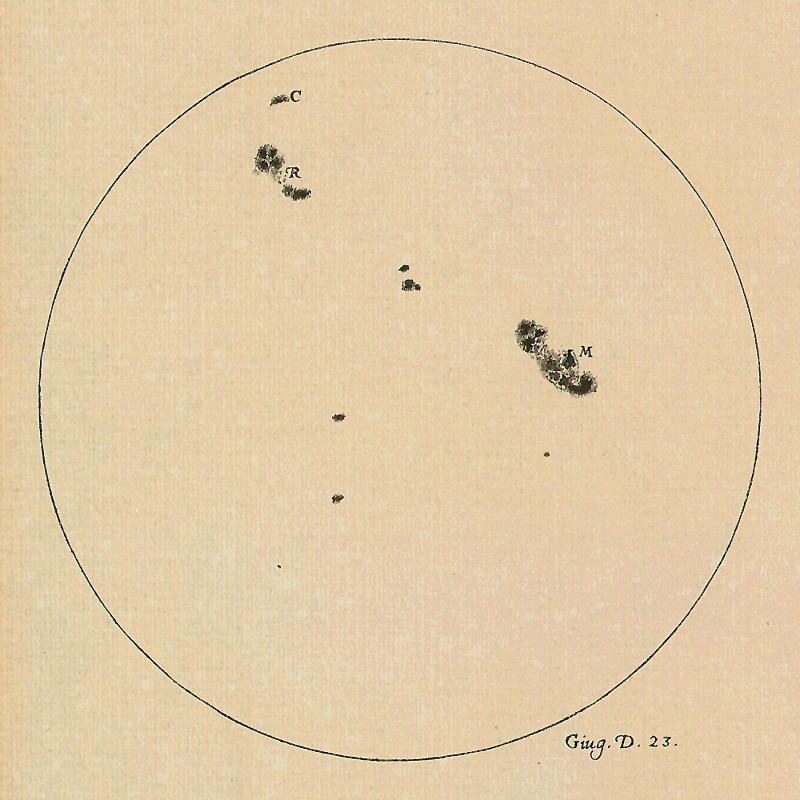
Are you intrigued with sunspots? Would you like to get involved - up close and personal - with sunspots? There are several ways you can do that! |

Are you intrigued with sunspots? Would you like to get involved - up close and personal - with sunspots? There are several ways you can do that! |
In 1843 an amateur German astronomer named Samuel Schwabe discovered the rise and fall of sunspot counts over a period of years. We now call this 11-year cycle the sunspot cycle. Daily counts have been done since 1849, and still continue. You can do your own, although counting sunspots is not as straightforward as it sounds. Not only do you have to figure out how many spots there are, but how many groups. And deciding what is a group isn't easy!
The Sunspot Number and How to Count Them
How to start a project on sunspot counting
Learn about sunspots counting in the past and how they got some wrong
Did you say you liked to draw? Before the advent of sophisticated cameras and other technological wonders, astronomers had to rely on drawings or sketches to document what they had seen. Humans have been sketching sunspots for hundreds of years. Check out Historial Sunspot Drawing. An English monk named John of Worcester made the first drawing of sunspots in December 1128. In 1612, Galileo's sunspot drawings touched off a huge controversy about whether the blotches were on the Sun or small planets orbiting it. Sunspot drawings have been going on since then. Historic drawings are still very important. And even today, drawings are still most accurate at recording exactly what the eye sees, unaltered by the processing of fancy electronics. You can do your own sunspot drawings by observing sunspots using various methods of observing the Sun. See Safely Observing the Sun for Yourself. Then you can compare your sketches to those at Mt. Wilson, an observatory in Pasadena, CA that has been doing sunspot drawings since 1917. This tradition still continues today: Daily sunspot drawings at Mt. Wilson

There is a citizen-science, Zooniverse, project to rank the complexity of daily sunspots. You too can participate! Sunspotter Project